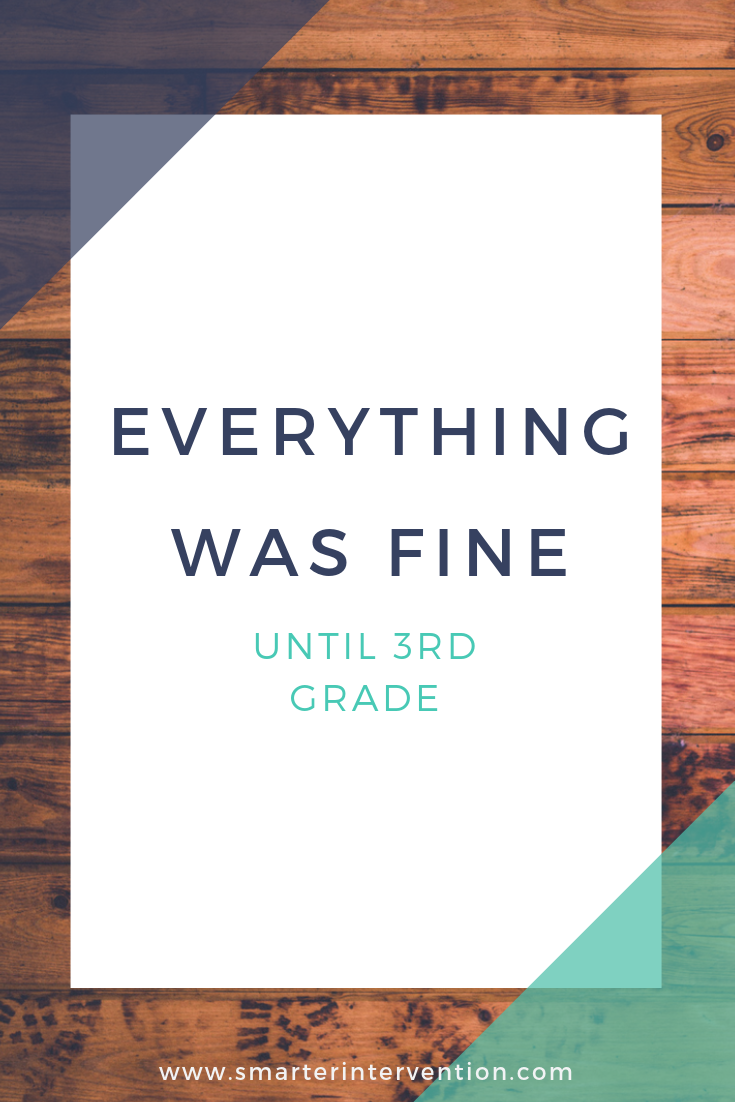Everything Was Fine Until 3rd Grade
A common theme that we hear from many of the parents we work with is, “Everything was fine until third grade.”
Parents often wonder, what happened!? My child wasn’t struggling in class, the teacher didn’t express any concerns, their reading was on grade level or close to it, and then suddenly in third grade, everything fell apart. What happened!?
For all students, third grade is a big year that brings about significant change to their educational journey. For dyslexic students, this is typically the year that dyslexia makes its presence known or becomes more obvious.
Why, you ask? What’s the big deal about third grade?
In Kindergarten, first, and second grade, students are learning phonemic awareness and phonics.
These are the first two elements of literacy instruction; phonemic awareness, phonics, fluency, vocabulary, and comprehension. While all five elements are developed in these primary grades, the emphasis is on the first two, phonemic awareness and phonics.
These two skill sets are all about learning sounds, associating these sounds to letters, blending these letters and sounds together to decode words, and all the rules that go along with that enormous task of developing early reading skills.
While phonics instruction is still a common denominator in third grade, it is no longer a main focus like it was in the primary grades. I often tell parents that second grade is the last stop on the phonics highway in terms of explicit instruction.
In grade three, expectations increase significantly in many areas.
Students go from the primary grades where they are learning how to read to grade three where they are now expected to take that foundation of decoding skills and letter/sound knowledge and apply that to texts to read for information or read to learn.
Teachers who are trained to identify the signs of dyslexia may notice early in the primary grades that a child is struggling. Often, especially if the teacher is not familiar with these indicators, it may just seem that the child’s reading hasn’t ‘clicked’ yet, or they need the gift of time to mature and cement these skills. In this primary setting, a dyslexic child is getting the instruction that targets their greatest area of weakness, phonemic awareness, and phonics.
Even if they are struggling, they are still being exposed to the information they need and it is being reinforced daily. In this setting, a dyslexic child can cope and fly below the radar so to speak.
Texts in primary classrooms are decodable, predictable, repetitive, and offer a lot of picture support. Dyslexic students can use their above-average strengths to look like readers with these texts even if they can only access a portion of the actual text.
A dyslexic child can often glean the gist of the story from the pictures and seemingly comprehend the text. They may identify some of the words from their memory and appear to be decoding the words in the book. These children can look like they are reading or only minimally struggling when in fact they may be merely coping and barely getting by.
These coping strategies no longer work in third grade because texts become longer, contain more multi-syllabic or hard-to-decode words, and books do not have nearly the same picture support that primary-level texts do. This makes it harder for dyslexic students to fly below the radar and their difficulty accessing text or decoding becomes more apparent.
It is because of the context of expectations in third grade (as compared to the expectations in the primary grades when students are learning the ropes of decoding) that it can seem as if a child is suddenly a struggling reader when in fact, they may have always been a struggling reader – the signs just weren’t as obvious.
If you are a parent or educator looking for more information on dyslexia, click here to read “5 Clues to Dyslexia.” You can also join us for our FREE online training 7 Steps to Reading Intervention that Works by clicking >> here! <<

